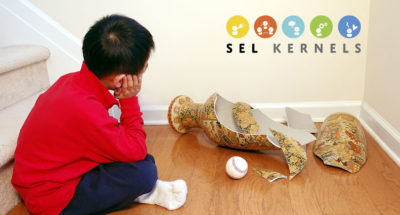
Dear Abby: An SEL Kernels Practice for Kindergarten
Students imagine difficult situations and talk about strategies for making responsible, ethical, and healthy choices.

Students imagine difficult situations and talk about strategies for making responsible, ethical, and healthy choices.
Students will:
Note: Click here to download and print a card version of this practice that can be added to the other SEL Kernels practices to make an easy-to-use hand-held collection. See the Brain Games pack for additional activities.
This practice is part of the SEL Kernels project developed by the EASEL Lab at Harvard University.
Research shows that implementing character education programs in schools yields a number of positive results, including higher academic achievement, fewer suspensions as well as dropouts, and fewer risk behaviors of students.
Character is considered to encompass understanding, caring about, and acting upon core ethical values such as respect, justice, citizenship, and responsibility for self and others. It also frequently includes the values and habits required to be a good worker and perform to one’s highest potential, such as perseverance, diligence, and self-control.
More than simply holding prosocial ethical and performance values, displaying strong character requires taking the initiative to act upon those values and having the perseverance to follow through on them when faced with ethical, interpersonal, and personal challenges. In many ways, character can be understood as a complex construct that marshals underlying cognitive, emotional, and interpersonal skills to produce and guide ethical thoughts and behaviors.

Are you ready to build a kinder, happier school where everyone belongs? Join Greater Good Educators! Explore the science of well-being in a supportive community of educators from around the world. Registration is now open for the 2025-2026 school year!
Comments